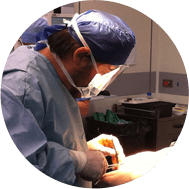Rehab
Rehabilitation is aimed at restoring the physical, sensory, intellectual, psychological and social function of an individual. The goal of a rehabilitation program varies depending on the specific needs and is aimed at achieving a quick recovery. This program assists the individual in returning to a normal life through therapy or training.
The rehabilitation program is structured after a thorough clinical assessment of the individual. Therapy is provided by a multidisciplinary team in a group or individual setting with daily or weekly sessions based on the level of impairment. An inpatient program may be recommended for those with severe disability. Occupational therapy helps you perform specific tasks such as driving more efficiently. Activities are organised to help you re-enter your community, school or workplace.
Patient Surgical Information
Ensuring your podiatric foot and ankle surgery is successful requires mental and physical preparation. You will need to be well informed about the surgical process, with utmost compliance, patience and a desire to get better. There are always risks associated with surgery; however, your decision to choose a Podiatric Surgeon who exclusively treats foot and ankle disorders is the first step towards a better outcome.
Before surgery, we will go through a complete physical examination with you to make sure you don't have any conditions that could interfere with the surgery and its outcome. If necessary, we will advise you to get basic tests, e.g., blood tests and X-rays, usually a week before surgery.
Please make sure you inform our surgeon of all medications you are taking prior to surgery. If you smoke, we would like you to stop at least 4 weeks prior to your surgery, and to not start again until 8 weeks into recovery. Eat a well-balanced diet and let us know if you have loose teeth or plates in your mouth.
Surgery cannot be performed until all infections have cleared up. Report any infections to your surgeon especially on your chest, skin and in your mouth.
On the day of surgery, wear loose-fitting clothes that are easy to put on and will fit over bulky bandages or surgical dressings. Please remove make-up and nail polish. Shower either the night before or the morning of your surgery. Trim your nails and/or pay care that your feet and nails are clean.
Someone will need to drive you home after the surgery and stay with you overnight. Only eat when you start feeling hungry and try to start with a light meal rather than something greasy. When you arrive home, make sure you have set up somewhere comfortable to rest. Keep your foot/feet elevated as much as possible to encourage healing. Pain is better treated before it arrives - take your prescribed painkillers regularly according to instructions, even if you're not feeling any pain when you start. There is no need for you to be in constant pain following the surgery.
While you are resting, it is important that you do passive gentle movement exercises. This is to encourage your blood flow, muscle strengthening and prevention of joint stiffness. You will be given exercise information by the surgeon after the operation, which you can start when you arrive home. Continue with your exercises up until your post-operative appointment. Please keep your bandages/cast clean and dry and leave intact until your post-operative appointment.
Make sure you report any ill effects from the surgery, such as swelling, pain or infection. The surgeon's contact details will be provided to you after surgery.





